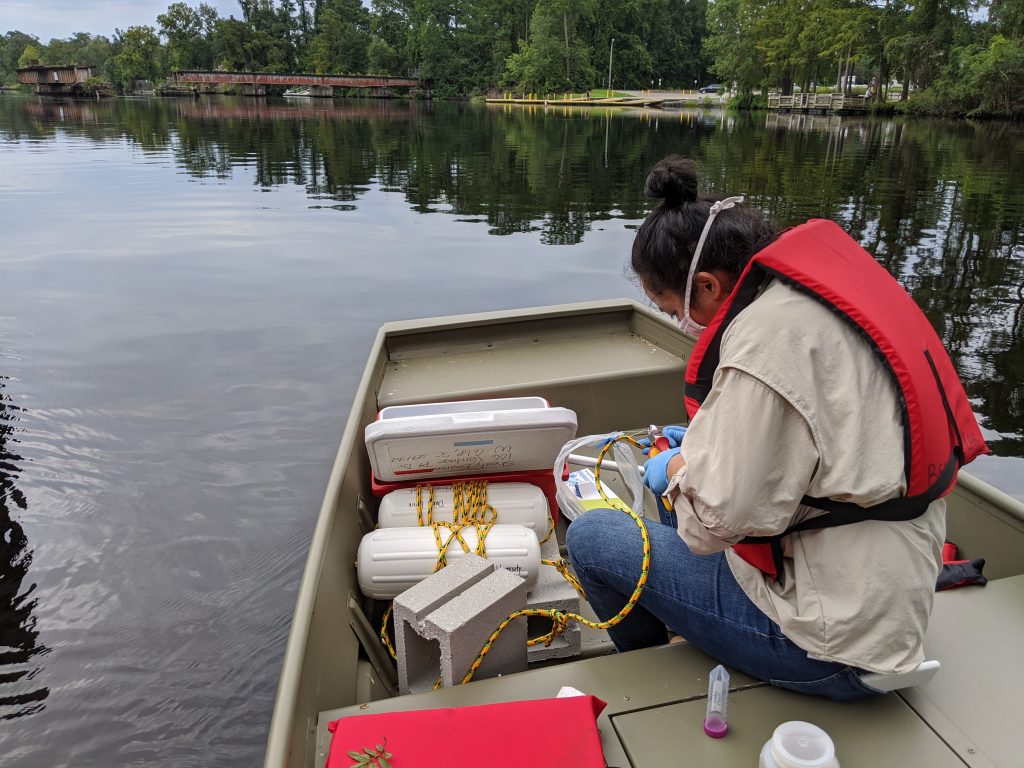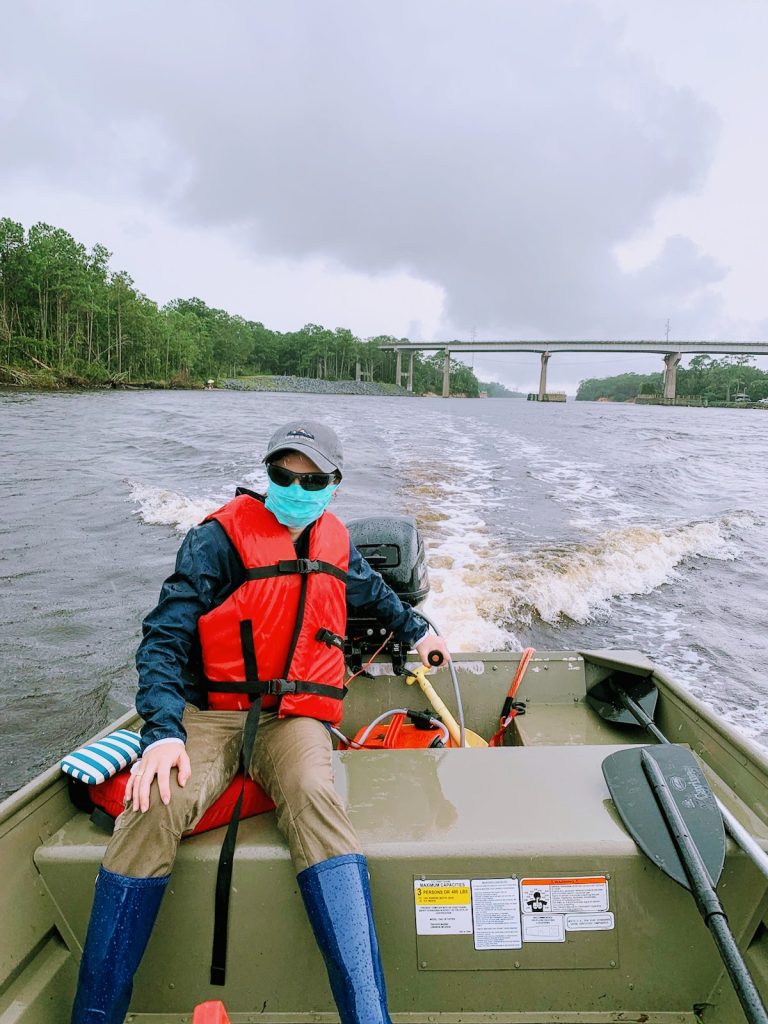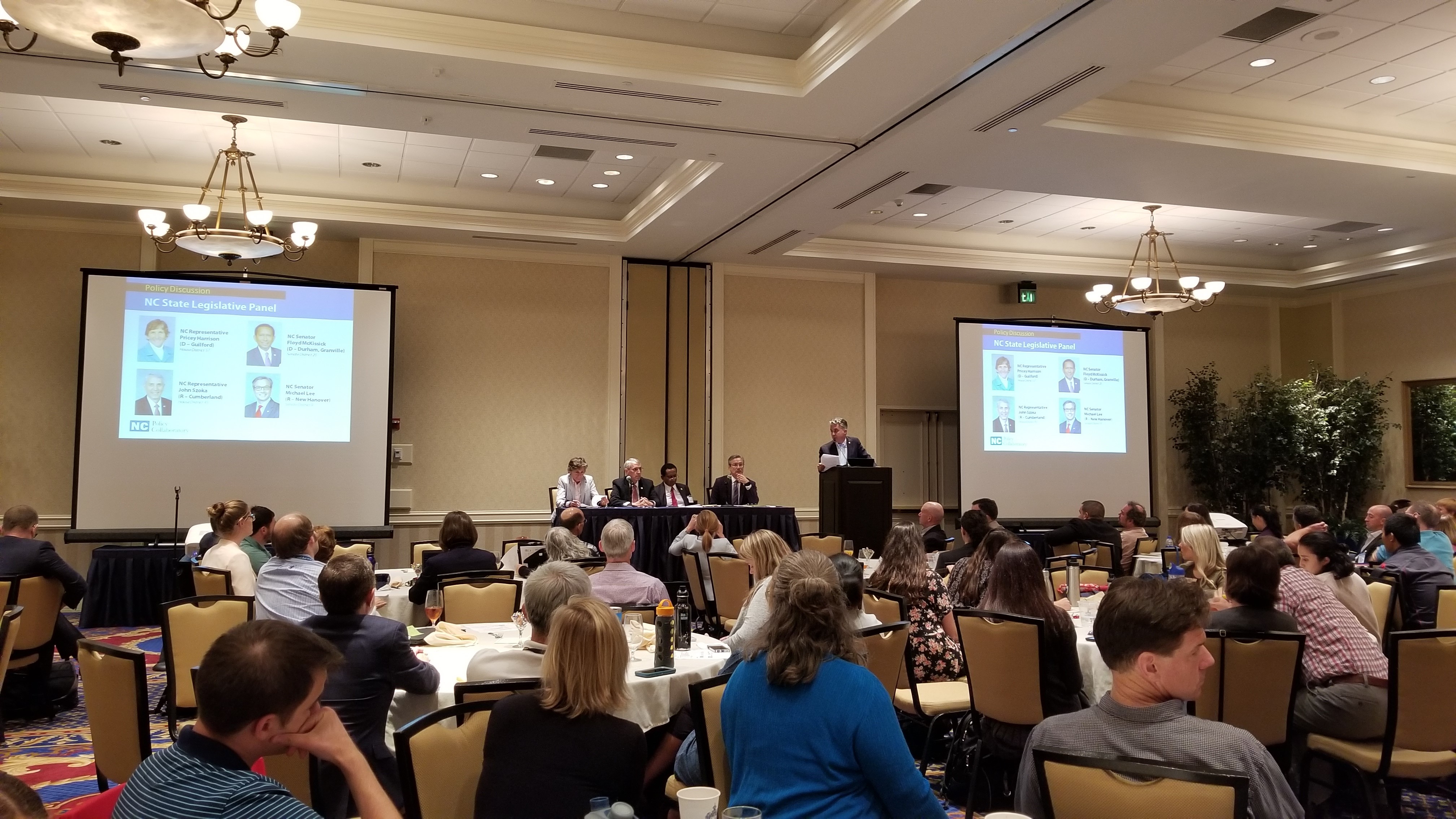
On Friday, August 21, Duke University Superfund Research Center Staff Catherine Kastleman (Program Coordinator for Community Engagement and Research Translation) and Abigail Joyce (Analytical Chemistry Core manager) traveled from Durham to the lower Cape Fear River along with Madi Polera, a NC State University PhD student in Scott Belcher’s lab. The trio was there to deepen their understanding of the Cape Fear’s water quality and the health of its fish, using plastic.
Though it seem strange to use plastic to measure pollution, it’s actually a common and relatively hands off way of sampling an environment over time. This practice is called passive sampling. The team deployed six plastic passive sampling devices to measure PCBs (polychlorinated biphenyls), PAHs (polycyclic aromatic hydrocarbons), and dioxins in the water column at six popular fishing spots along the Cape Fear River. In this case, the plastic acts like a sponge for specific chemicals, giving researchers an indication of how much of the contaminants fish (and eventually, people) might take in from the waters there.

Analytical Chemistry Core Manager Abigail Joyce 
NC State PhD student Madi Polera
At each site, the team also took water samples to be analyzed for one of the groups of contaminants, PFAS, in the Belcher lab. The six locations were:
- Castle Hayne Boat Launch in Castle Hayne, NC
- Archie Blue Park in Wilmington, NC
- Snows Cut in Carolina Beach, NC
- Belville Riverwalk in Leland, NC
- Davis Creek Pier in Navassa, NC
- Lock & Dam #1 in Riegelwood, NC

Teamwork is crucial in fieldwork, especially when you want to sample in the middle of a river. It also helps to have a boat! There were also some additional elements to this research trip due to the pandemic. After following all required safety protocols for COVID-19, Madi skillfully maneuvered her lab’s boat into the water to deploy the samplers.

Abbey assembled the passive sampling devices, which consist of a cinderblock “anchor” attached to a length of rope with three loops of plastic that will absorb contaminants from the water over a 4-5 week period. In this case, plastic acts like body fat, absorbing chemicals that are soluble in fats, like PCBs, PAHs, and PFAS compounds. A plastic buoy on top marks the location of the sampler in the water for retrieval.

buoy attached to passive sampler 
Passive sampler schematic 
Abbey assembling sampler
Next, it was time to toss them in!
Our team identified these sampling locations and popular fishing spots based on bankside intercept surveys conducted with fishermen, in addition to interviews with local stakeholders like bait shop owners, wildlife and health officials, and other community members.

Stay tuned for a research update later this fall when we retrieve the samplers and analyze them. The CEC will also be collecting fish tissue samples to test for the metals mercury, hexavalent chromium, and arsenic in the fish because they have been contaminants of concern in the area in the past. The passive sampling results will tell us if we also need to test the fish for PCBS and dioxins.
—
This research project is supported by NIEHS through Superfund Research Program Center grant funding, as well as NIEHS supplemental funding, directly to the Duke Superfund Community Engagement Core. This work is an extension of our ongoing work with subsistence fish consumers and community members in the lower Cape Fear River. Our hope is that by deepening our understanding of water quality and fish tissue testing, we can also improve fish consumption advisories and community health in the lower Cape Fear River.





